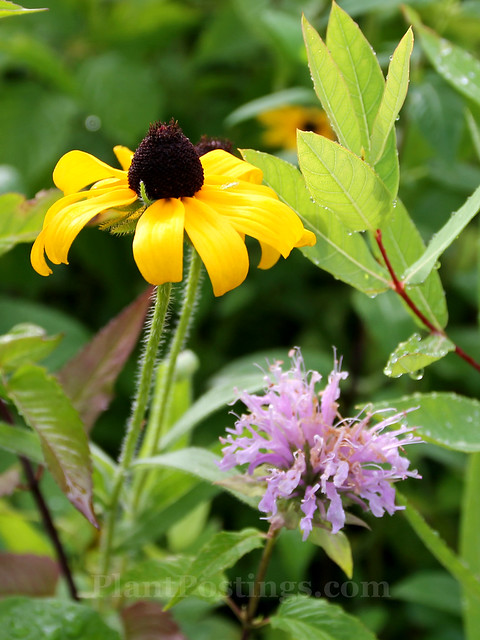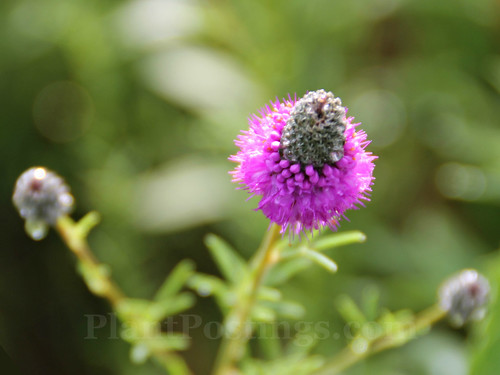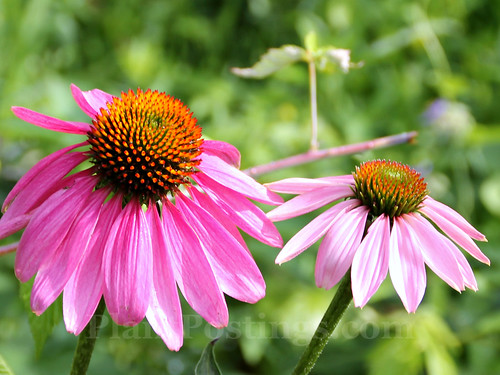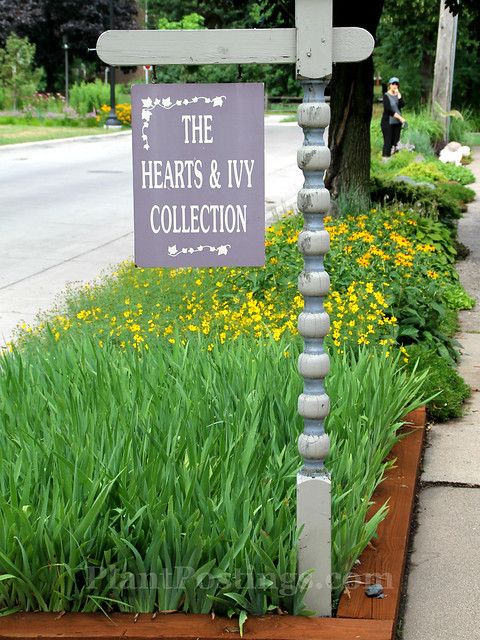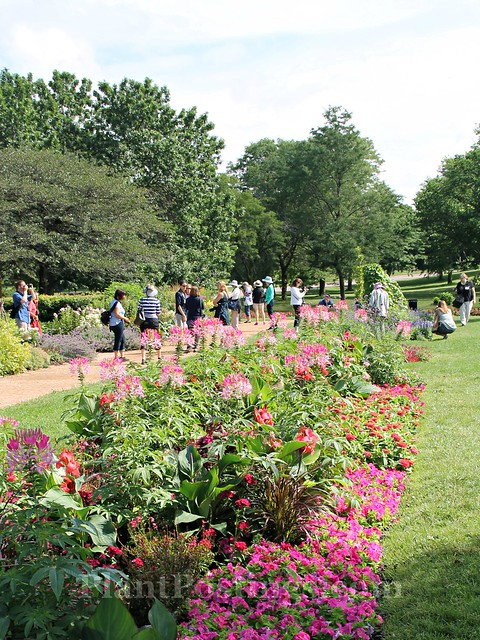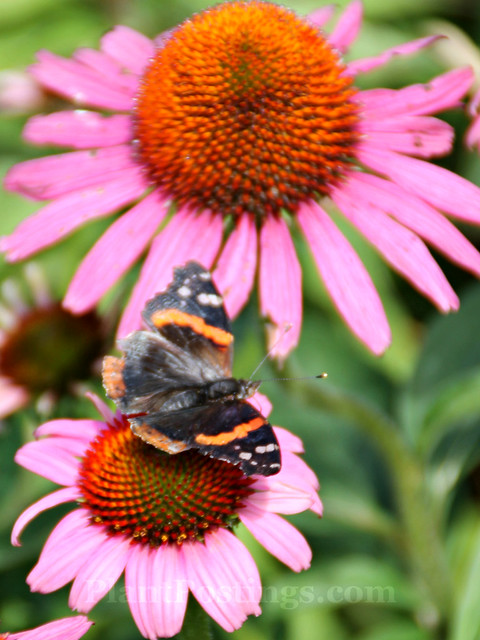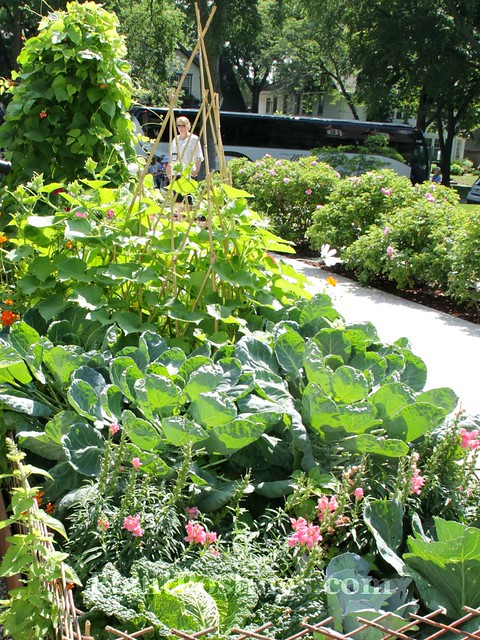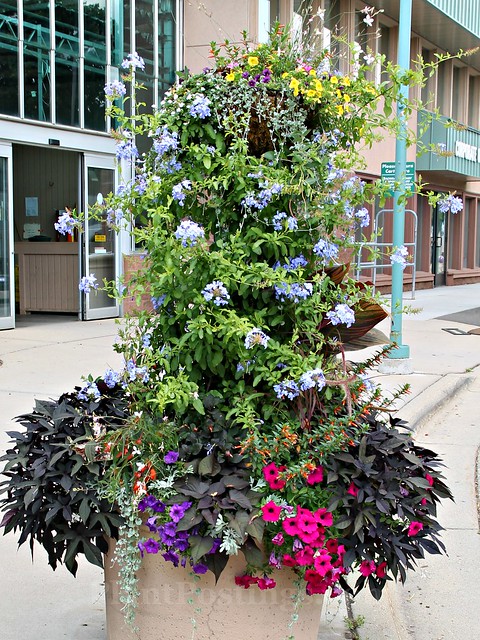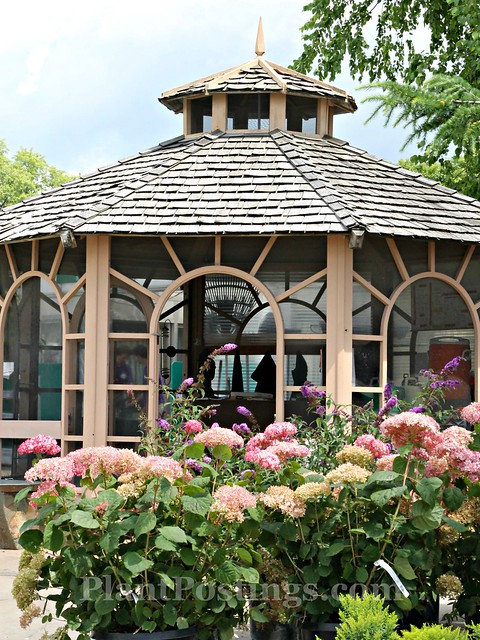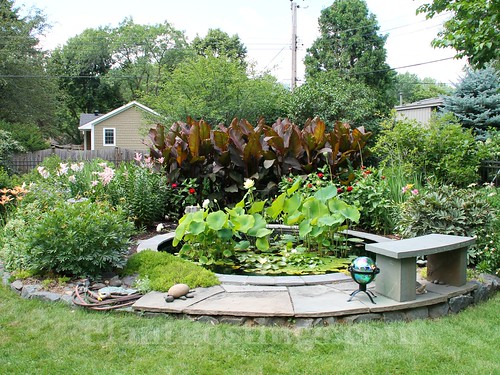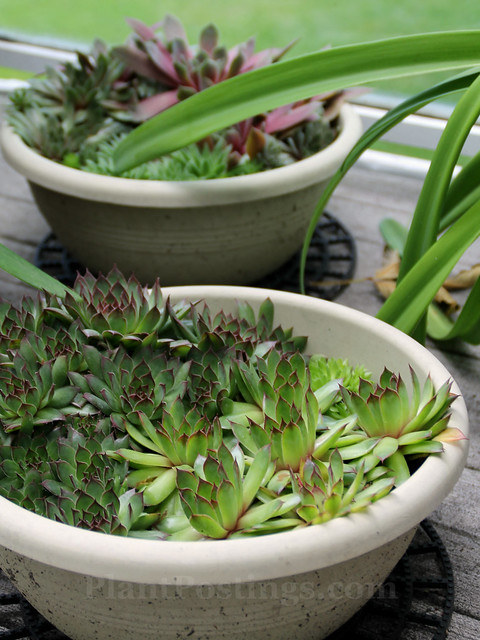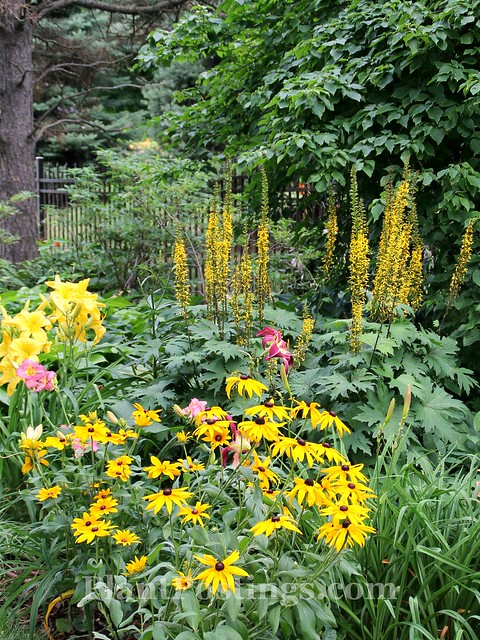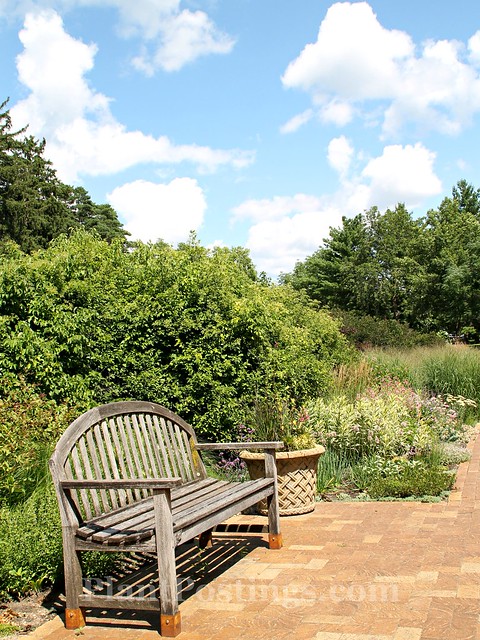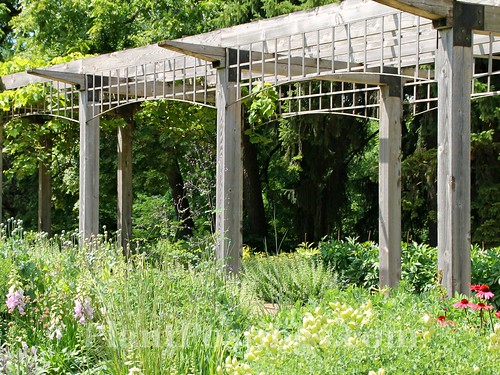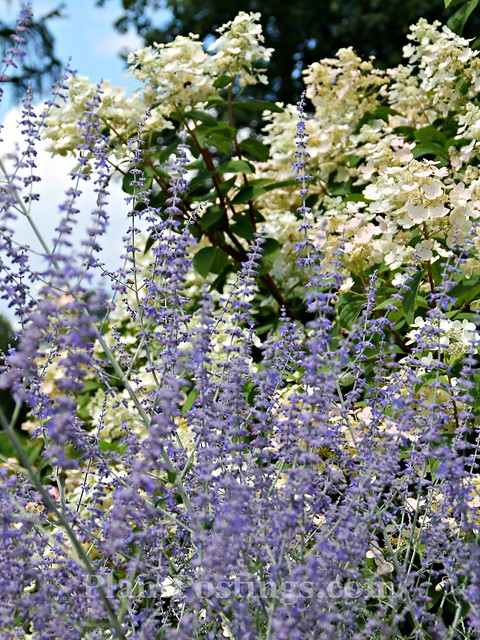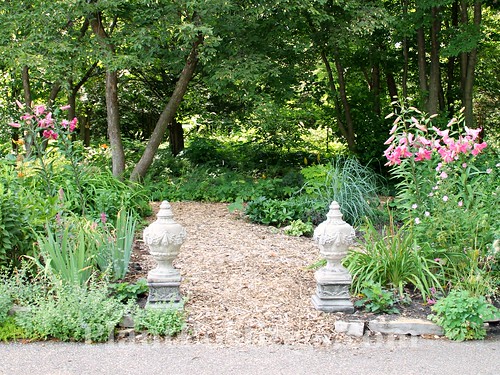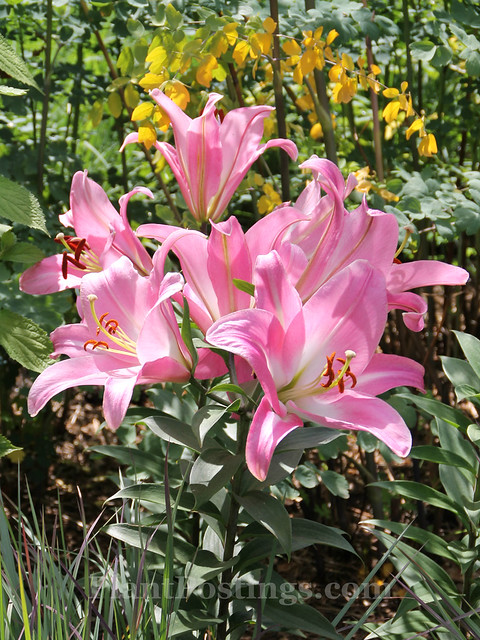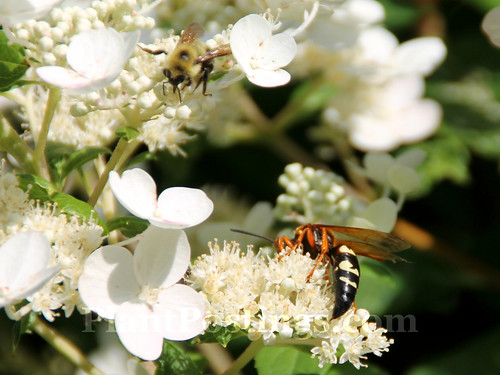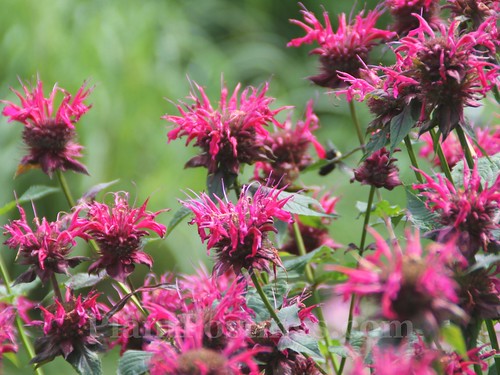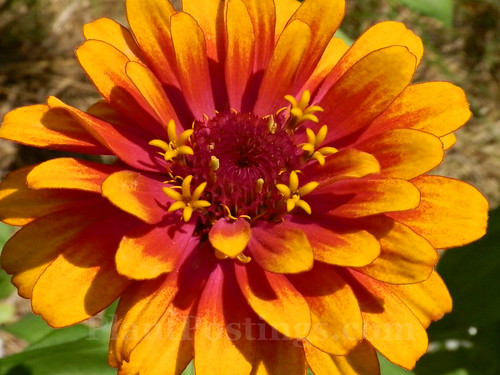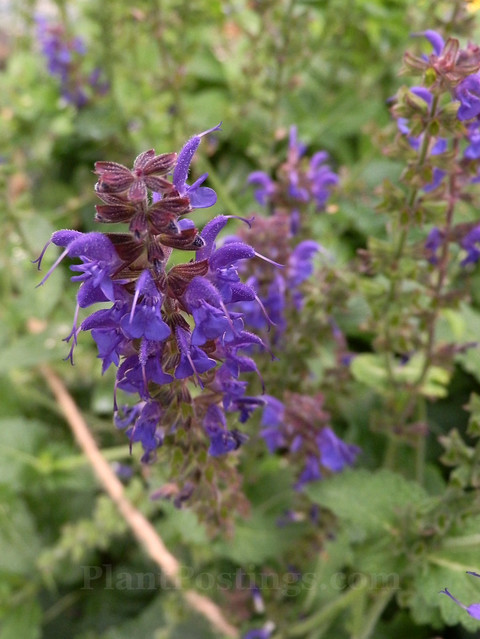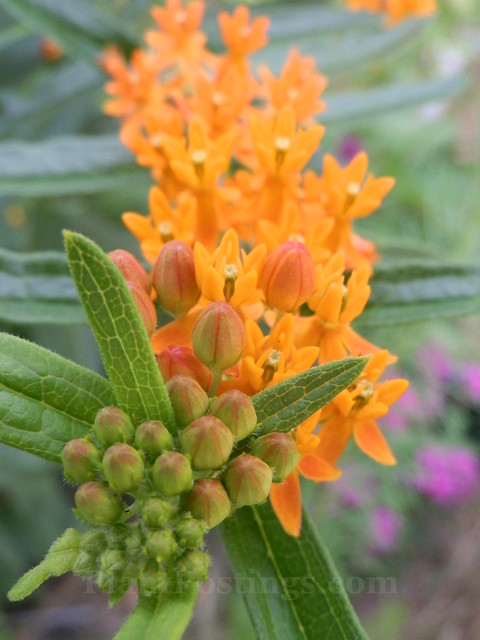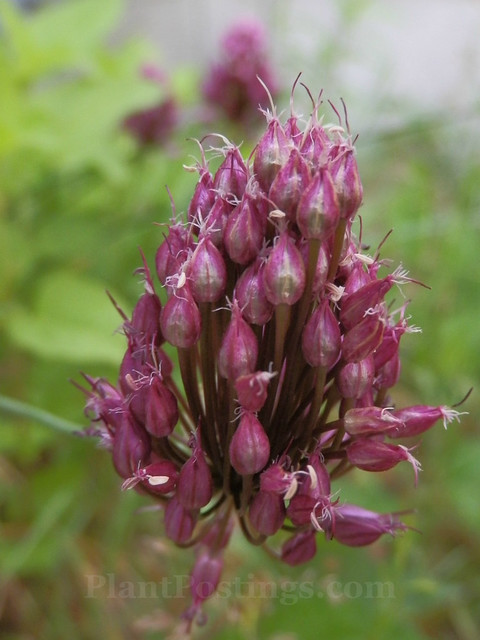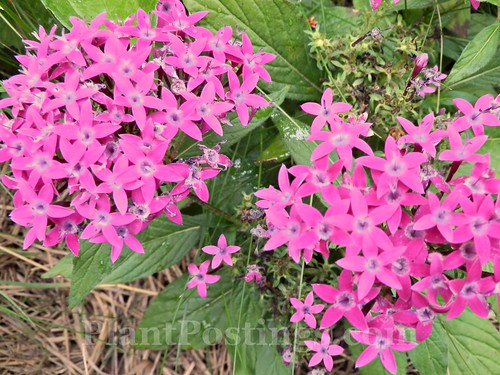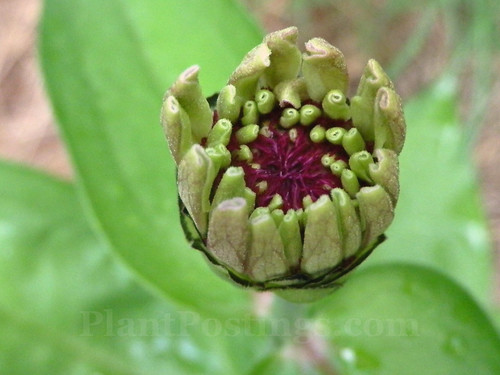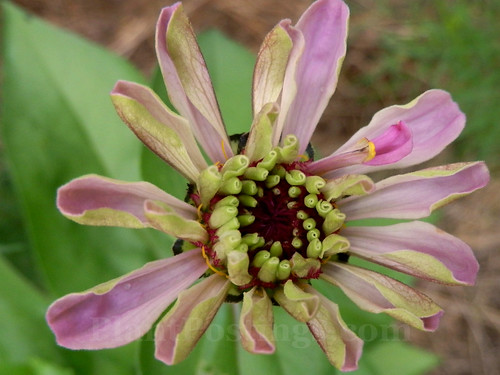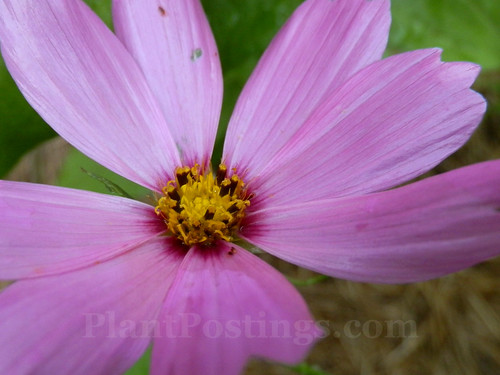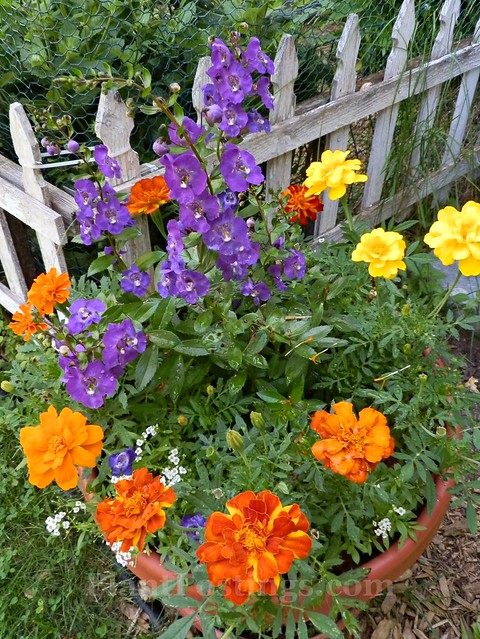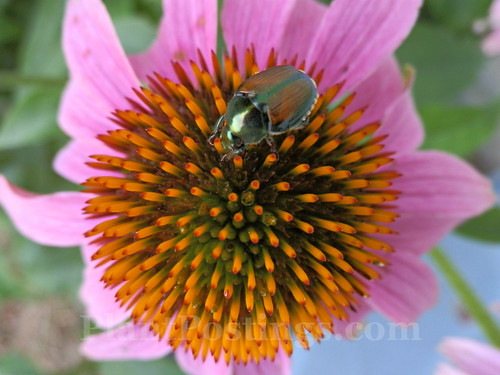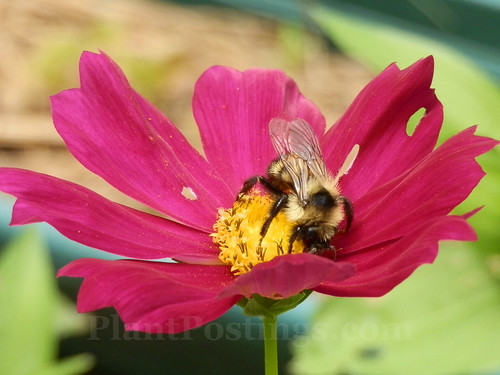 |
| This "vision" worked: a happy bumble bee on a 'Sensation Mix' Cosmos (C. bipinnatus). |
Have you ever had a plan or a "vision" for your garden that didn't work out?
That's what happened to me last year. I realized I didn't have enough fall-blooming, native perennials in the shady section of the garden, so I planted some.
In my mind, the Blue Mistflowers (Conoclinium coelestinum) would form a magical, soft swathe around the Swamp Milkweed (Asclepias incarnata). The Zigzag Goldenrod (Solidago flexicaulis) would arch gracefully along the trellis, and the False Asters (Boltonia asteroides) would bob and sway surrounding the Anise Hyssop (Agastache foeniculum) and the 'Vibrant Dome' Asters.
Unfortunately, the rabbits had a different vision. They ate all these plants down to the ground, except for the Milkweed (no taste for it), a few of the Asters, and the Mistflowers (which I rescued in time).
After decades of gardening--much of it in this current unbalanced ecosystem--I should have known. But most of these plants (except for the Asters) are generally considered "rabbit-resistant." Well, apparently these rabbits didn't get the message. I'd say a different animal was to blame, but the clues were obvious (and too numerous to list here). Not to mention trying to chase the long-eared pests out of this part of the garden several times.
So, I had to get creative. While the Agastaches and the Boltonias didn't return this year (whether victims of rabbit death or the freeze/thaw curse, I'll never know), the others did. And I discovered some happy surprises.

I surrounded the Blue Mistflowers in lava rocks and chicken wire-covered tomato caging, and planted 'Summer Beauty' Alliums around the perimeter. These things seem to be working and soon you won't even see the caging. Fingers crossed.
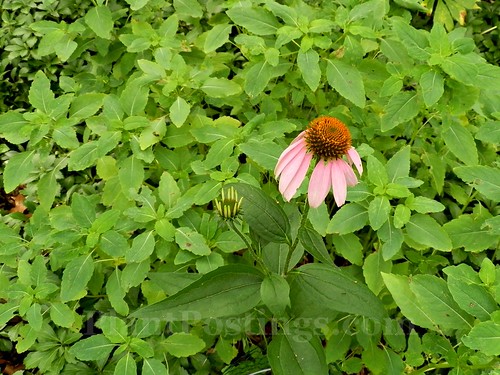
Oh, I forgot to mention I scattered seeds of Spotted Jewelweed (Impatiens capensis) in various spots around the garden. They really took off! In the spot where the Agastache and the Boltonia were located last year, is now a mound of Jewelweed surrounding a new planting of Purple Coneflower (Echinacea purpurea). I'm thinking this will soon be a popular spot with the hummingbirds. There are Alliums in here somewhere, too.
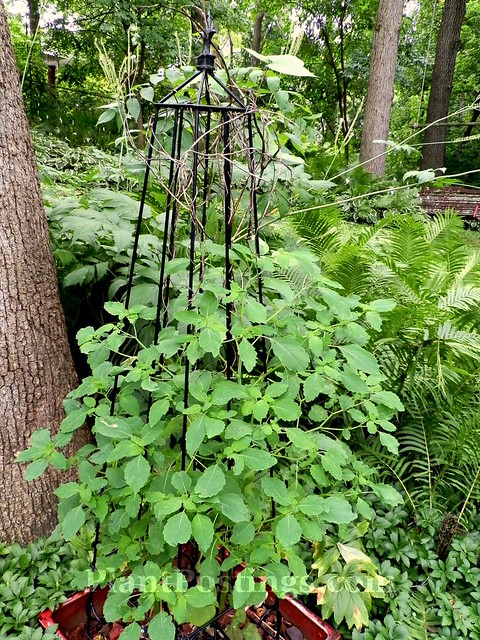
Yes, this is also Jewelweed. It's cuddling the obelisk, at the center of which is a Purple Hyacinth Bean vine, which is about to bloom. I forgot I sprinkled Jewelweed seeds here, too. Surprise!
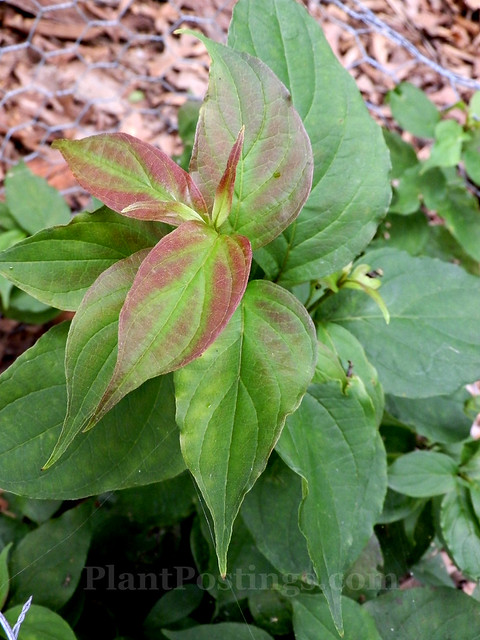
Other victims of the big-eared, large-fanged, plant-killing monsters were the four Dwarf Red-Tipped Dogwood (Cornus pumila) shrubs. Yep, the rabbits chewed them down to the ground during the winter. So, I rolled out more chicken wire, which will remain around the shrubs until they become established. Thankfully, they recovered from the insult.
OK, so most of those areas are under control ... for now. Here's another surprise:
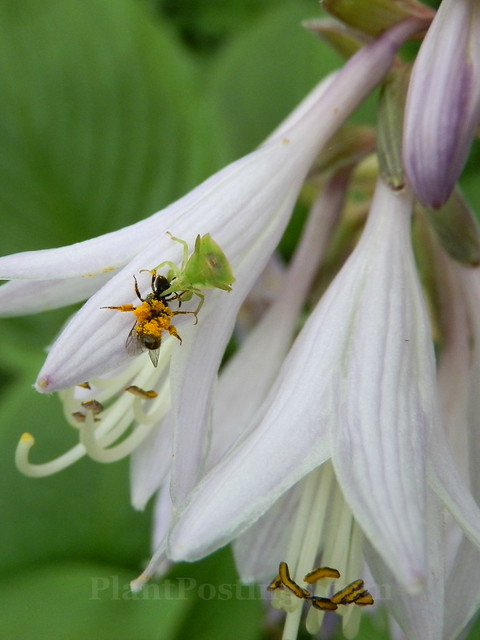
I walked by one of the Hosta flowers the other day and saw this. From a distance it looked like a bit of leaf with a strange pollen-covered bug next to it. On closer examination, I realized the pollen-covered bug was a bumble bee (I think). And with help from a few garden blogger friends (you know who you are...thanks!), I found out the green insect is an Ambush Bug Nymph. A sad, cruel, and yet fascinating natural occurrence.
Quickly shifting the topic...
Finally, I'm once again reminded about the rewards of patience. The Zinnias I planted from seed in late winter/early spring are now big and robust and ready for cutting. They'll offer repeat blooms now until October. Yay!
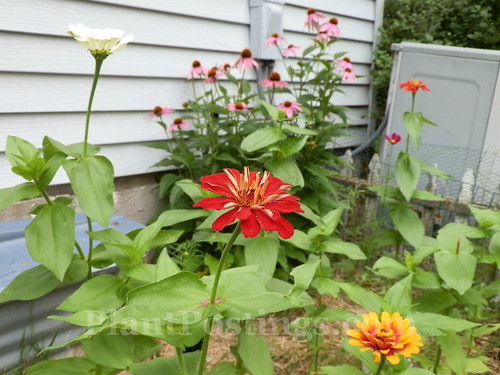
It's difficult to show a good angle on the cutting garden because it's on a steep hill on the side of the house. But you get the idea here: My only sunny garden is a small patch of land that, when blooming, camouflages (sort of) the window wells, the utility boxes, and the air conditioning unit.
When the Zinnias, Coneflowers, and other sun-lovers are blooming, it's a bright and cheery place full of pollinators.

The Butterfly Weed is forming seed pods.
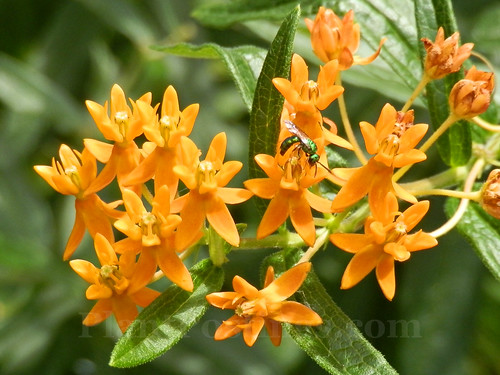
And enough blooms remain to keep the sweat bees full and sassy. Here's a little movie I made to celebrate:
Overall, the disappointments, surprises, and joys have a way of balancing out. And patience (with a few tricks) certainly pays off.
(Oh, and I must say I've tried just about every potion and scare tactic for the rabbits. Each one works temporarily, but in the end the only things that work long-term for me, here in this "rabbit wonderland," are rabbit-repellent plants--not rabbit-resistant ones--and miles of chicken wire.)

